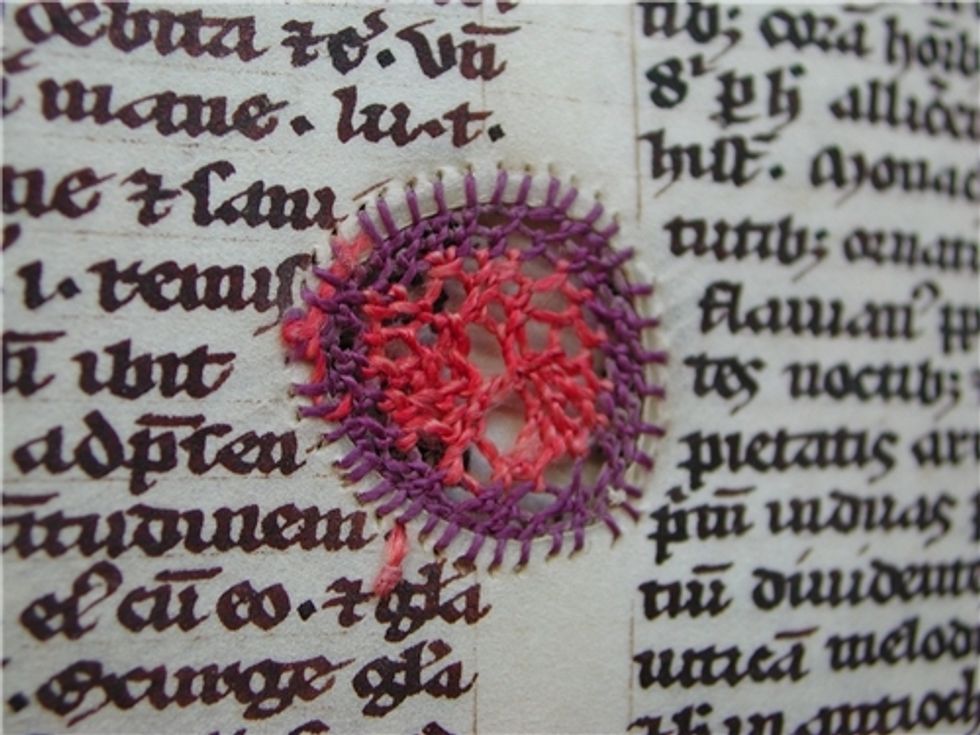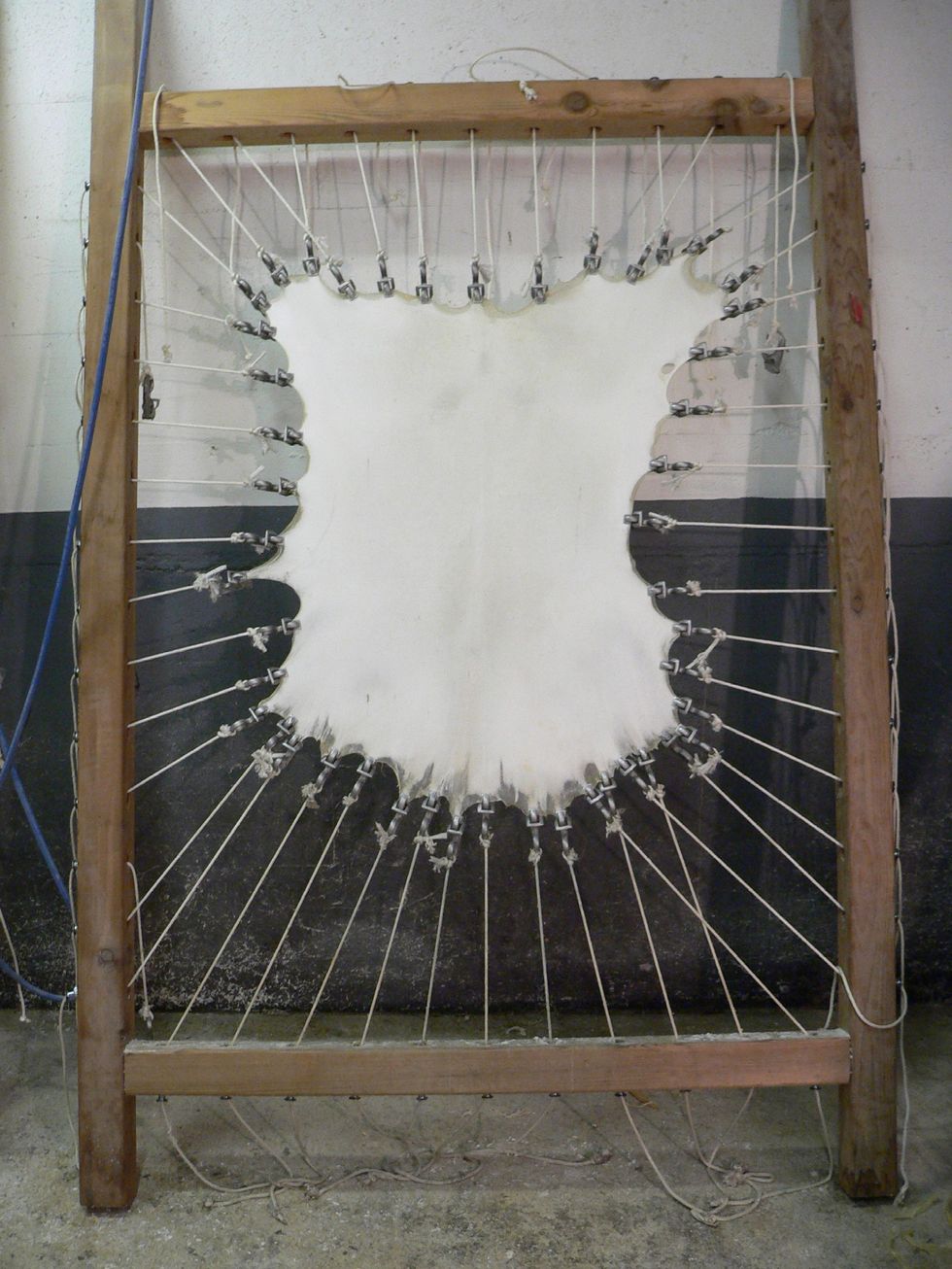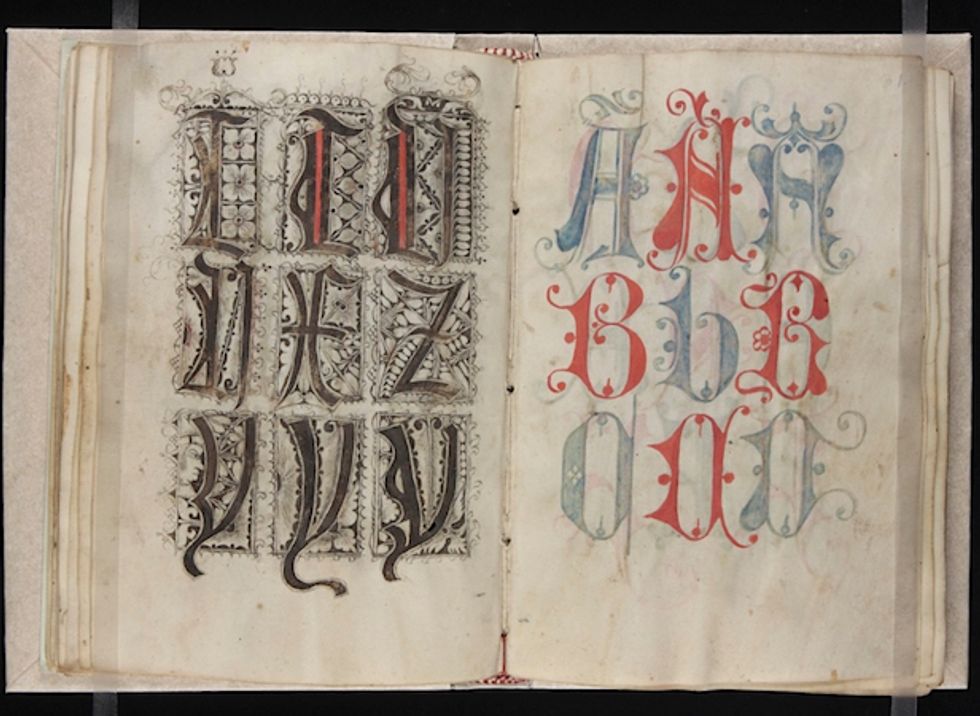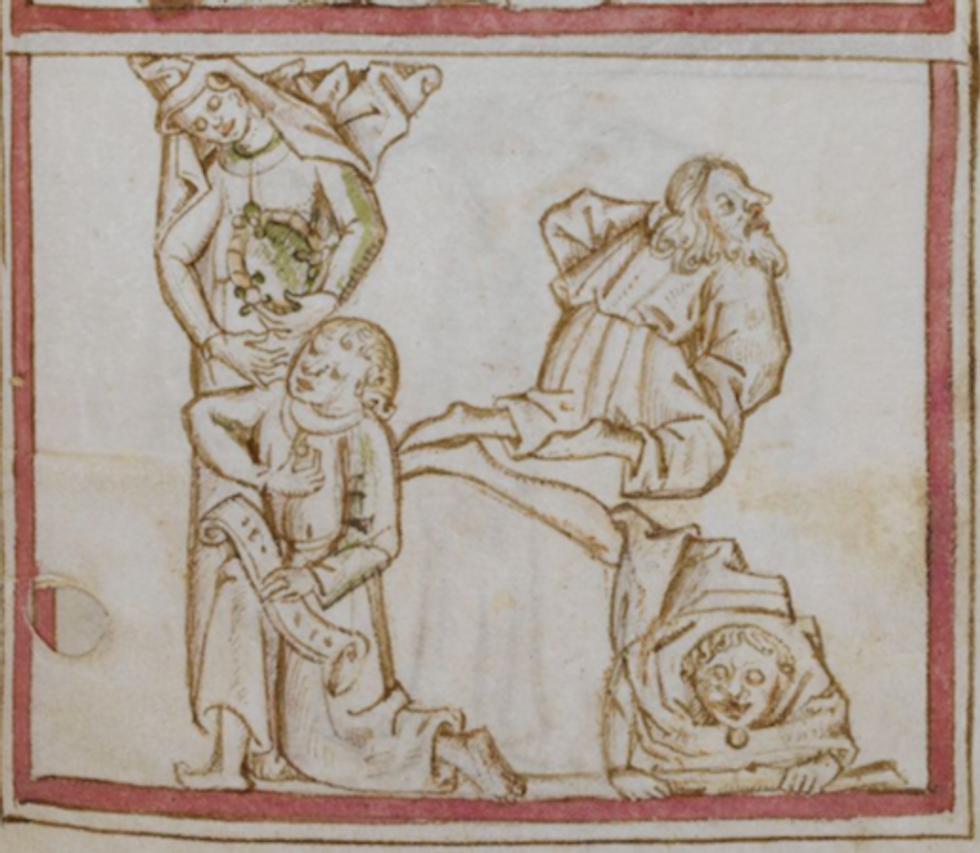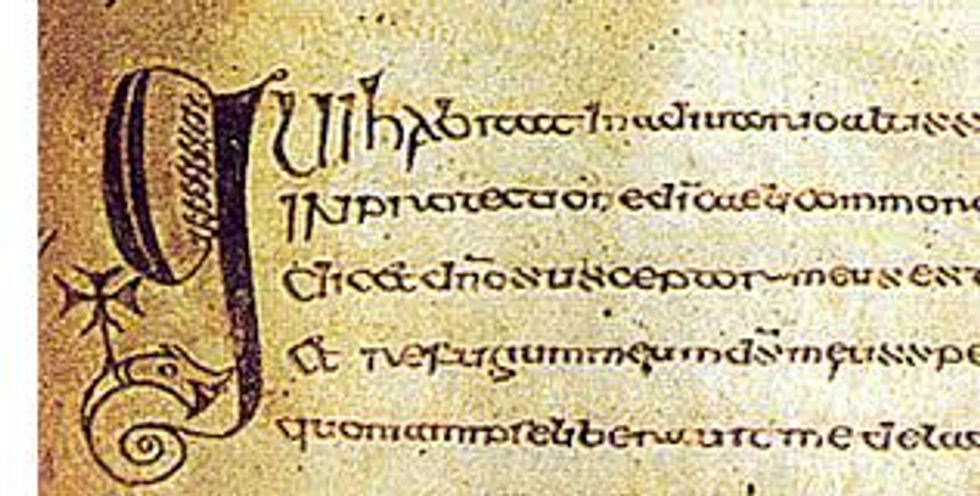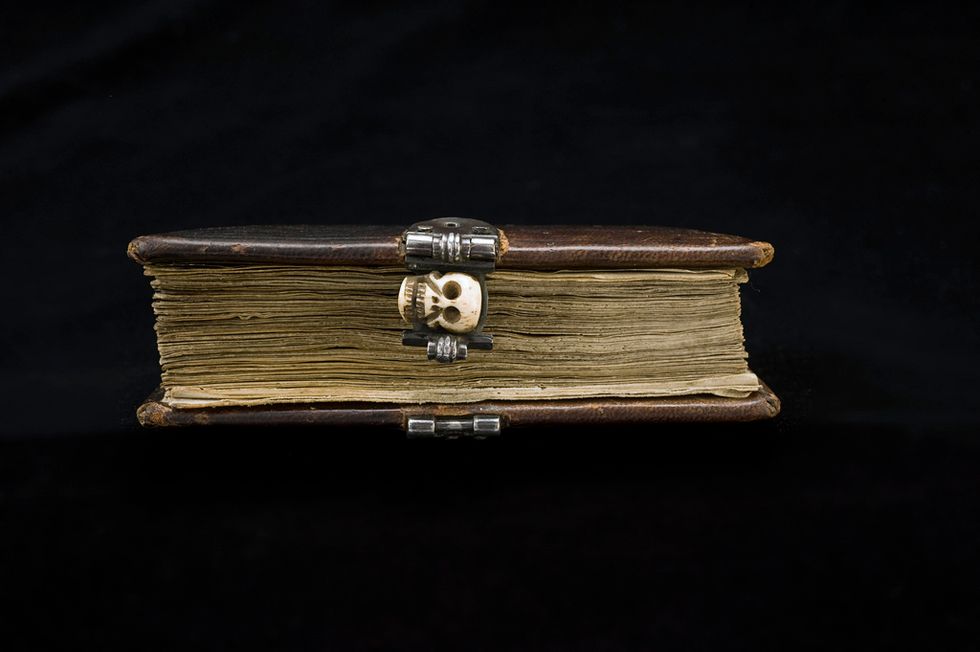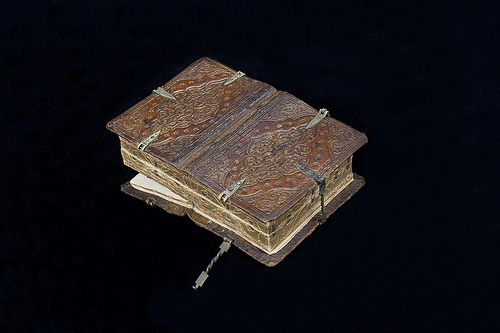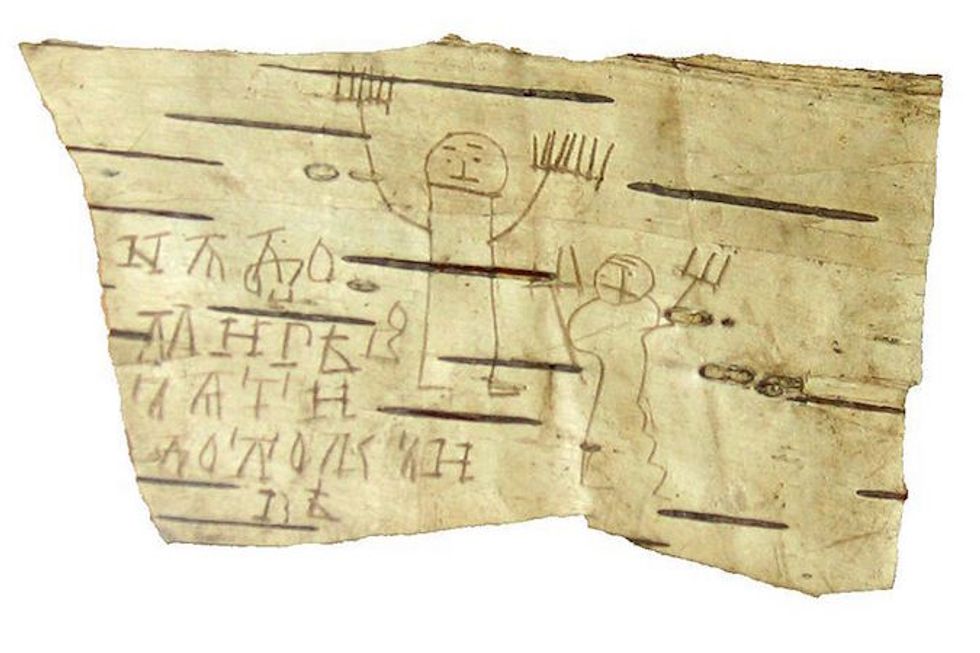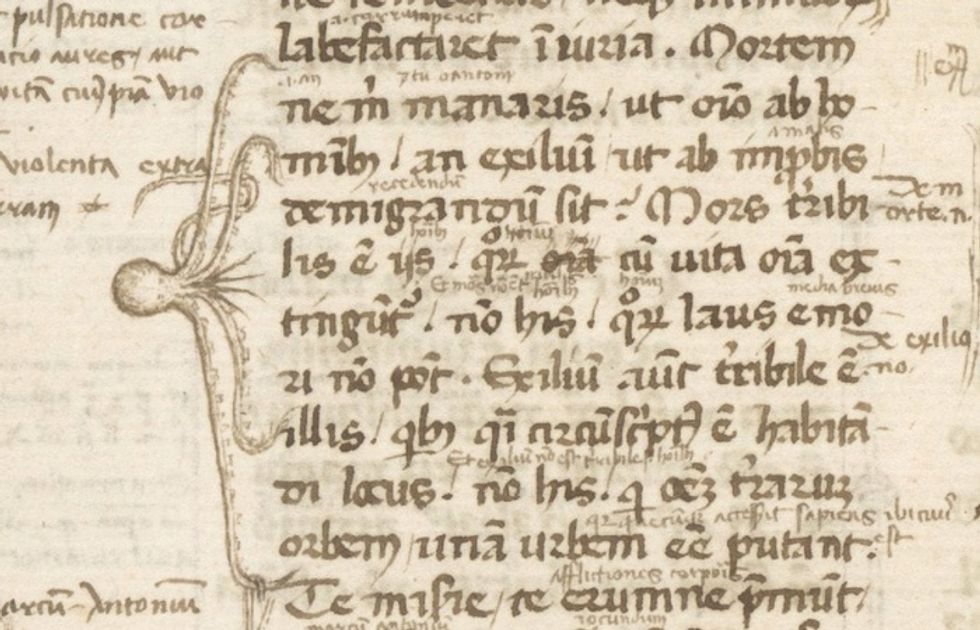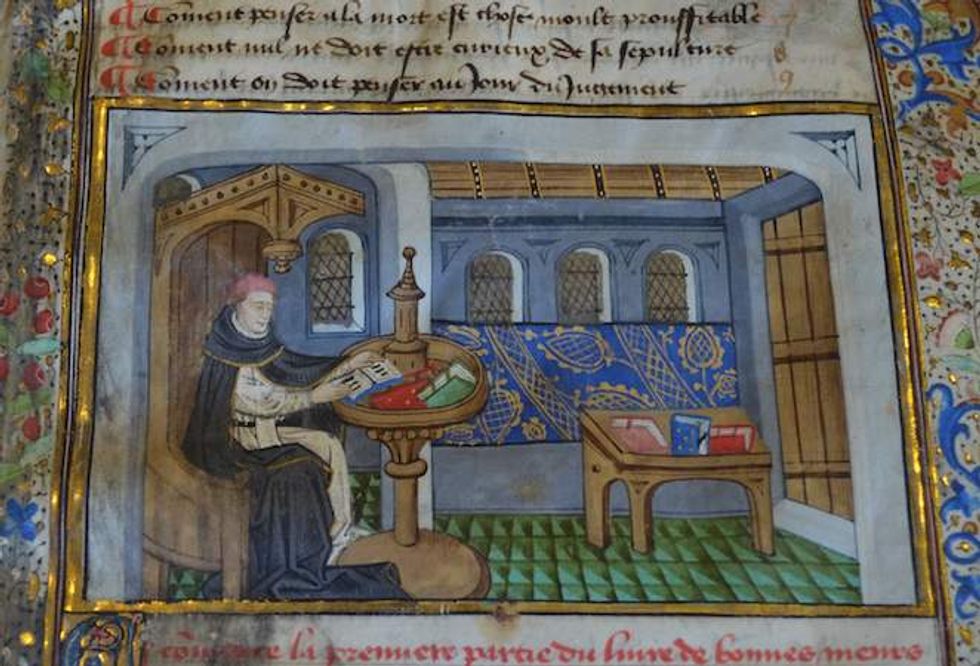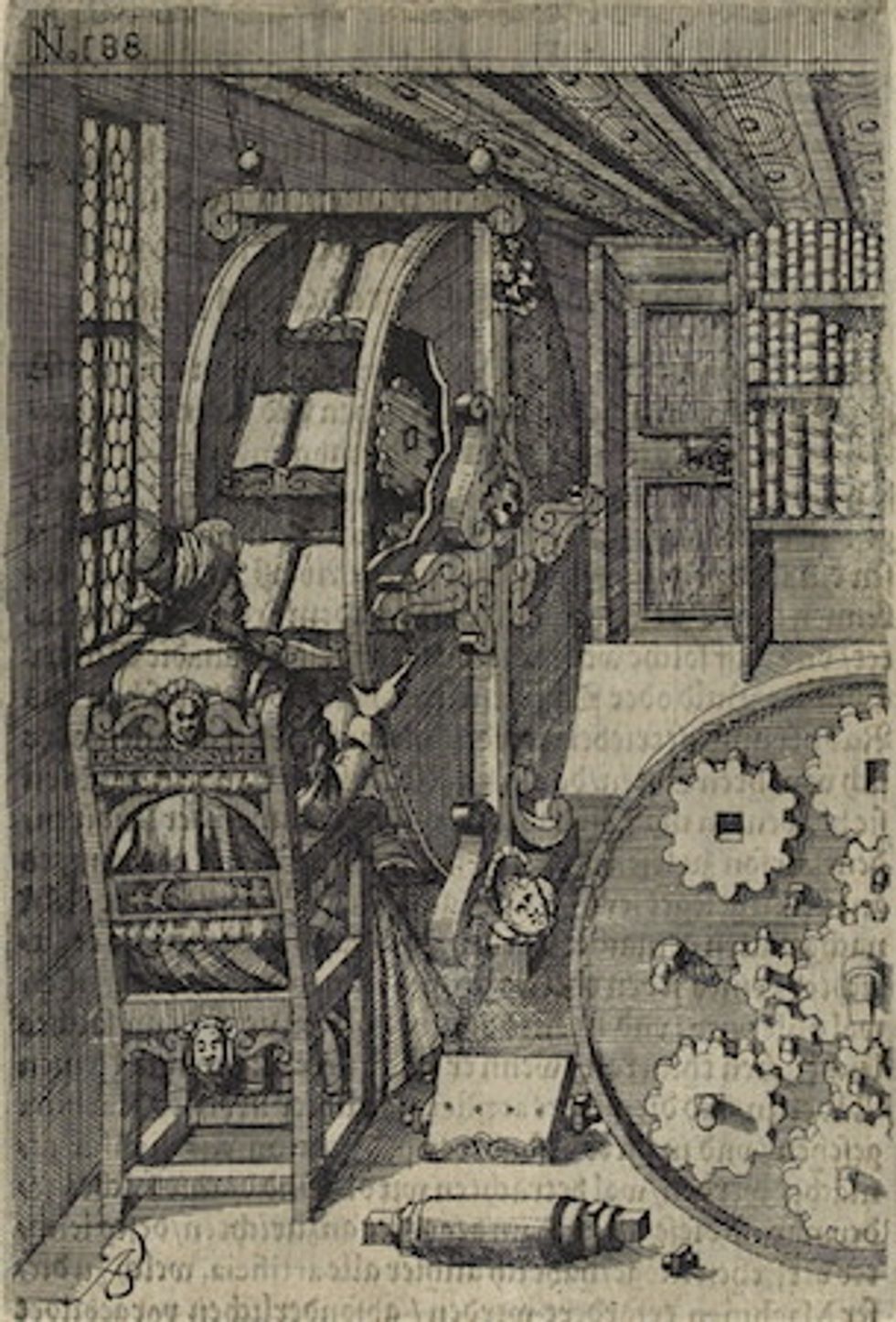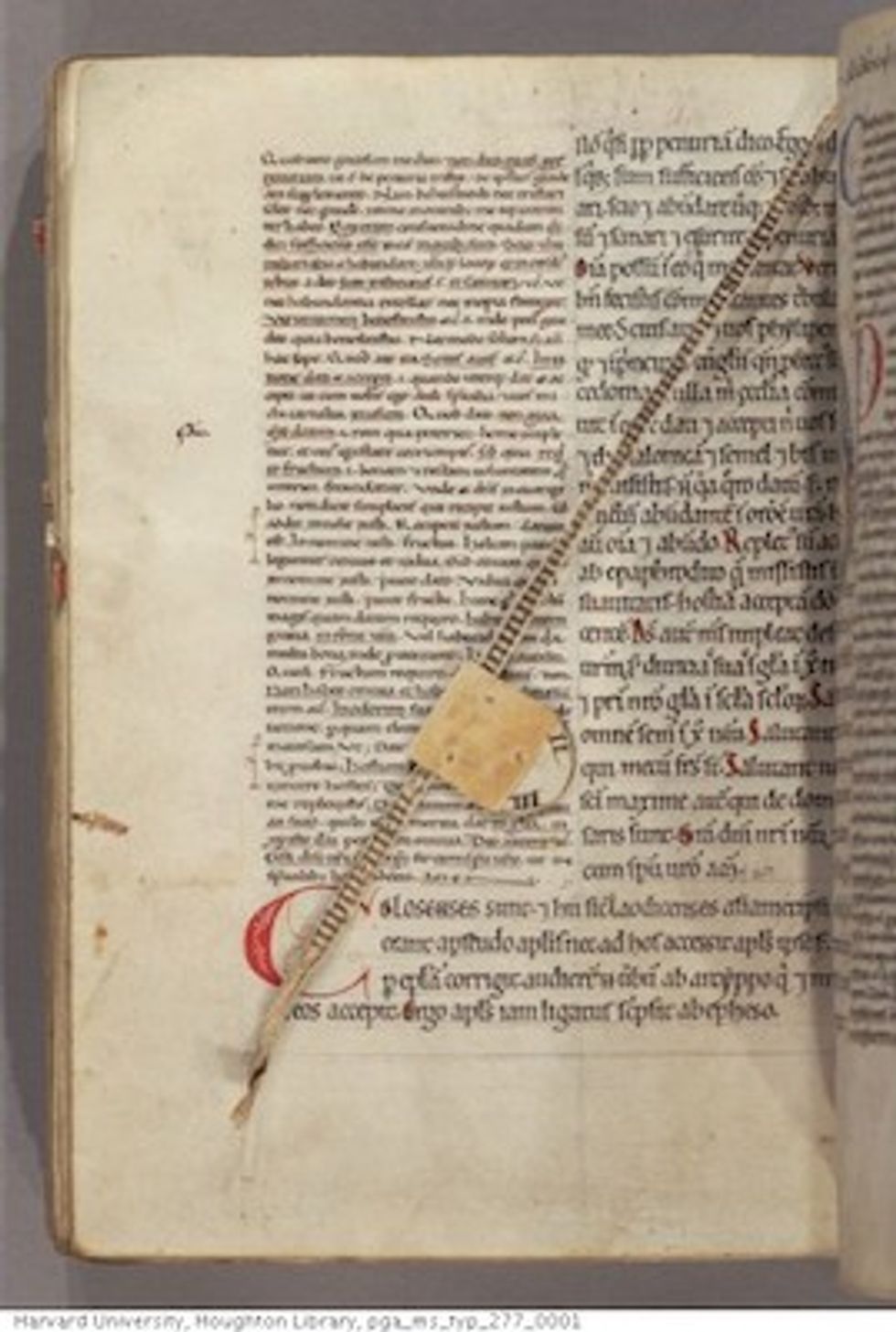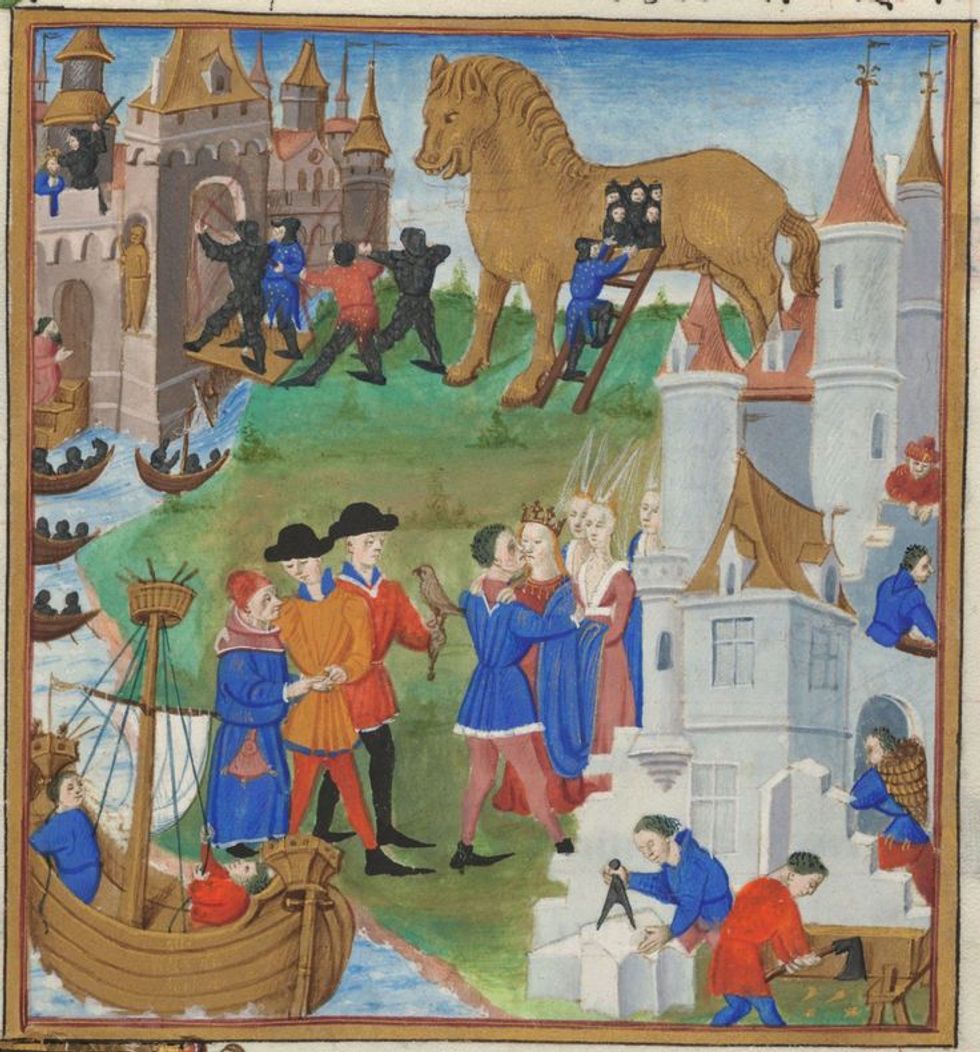Last Sunday, I presented a 1-hour panel about Medieval Manuscripts, not because I had to do it for some class but because I am the book-crazy who for some reason finds this subject endlessly fascinating. Based on my presentation, I reunited now 10 oddly satisfying facts about the use and production of such documents, which are proofs that the Dark Ages were not that dark after all.
1- Parchment, the writing surface Medieval people are most known for using, was subject to holes if not treated properly during production. But because it was still very resistant, the idea came to transform occasional apocalyptical defects into delicate embellishments:
* Still about parchment: lets just say Cassandra (Doctor Who) would not feel alone during the Middle Ages.
2- By the 12th century, Europe started importing paper from the Muslims. It was used only for lesser documents (Heaven forbid a Bible written with material of the Infidels), but around the 14th century the situation reverted and Europe, having learned the trade, began exporting. "Christian" paper, though, carried watermarks, as a way to differentiate the stocks and producers. These watermarks were often related to religion, and the point I'm trying to get at is, there's knowledge of at least one medieval Quran carrying small crosses in between its pages. I love this fact not because I take any sides on this age-old, but because it just shows that humanity has always been, and will always be, petty.
3- A very special kind of medieval manuscript was the Model Book. It basically had hundreds of instructions for how to decorate your work, guiding the scribers and illuminators through the process.
It's like going through all the different fonts on Word.
The fact that one of these books taught people how to draw acrobat monks forming letters is a satisfactory fact all by itself.
4- A decoration style which prevailed during the Early Middle Ages was diminuendo, through which the letters gradually decreased in size, going from the huge initial letter until normal writing. I find it incredibly cute.
5- Parchment had a tendency to curl after time, making it necessary for the books to be closed with clasps. Because of imagination, they were seen as arms hugging the book and many of them were actually shaped as hands, or better yet, as a tiny little sympathetic skull with even smaller bony fingers by its side.
And then we have this talented, brilliant, incredible, amazing, show stopping, spectacular, never the same, totally unique, completely not ever been done before, 6-books-in-1-with-6-clasps thing:6- Scribers, specially monk scribers, had a very hard life, writing all day long in absolute silence. Because they were bored and couldn't complain to their partners, they would use the margins of the books to put out their feelings. Some of their comments were:
“Writing is excessive drudgery. It crooks your back, it dims your sight, it twists your stomach and your sides”
“The book which you now see was written in outer seats, while I wrote I froze, and what I could not write by the beams of the sun I finished by candlelight”
Again, that's still what we do today. Students have in their notebooks more complaints about life than notes for class. Want an even better example of how we're still the same? Look at these scribbles and stick figures drawn by a Russian student during the 13th century, in a scrap piece of parchment:
7- Keeping with the notes on the margins of books, not only scribers wrote down their feelings, but readers also used them to criticize and add their own thoughts to the material in front of them. They would draw little hands (manicula) pointing to the lines they were commenting on. Someone, my hero, decided to be more creative and did this precious squid:
8- Books were heavy and managing many of them on a study-desk was not an easy task. But the perfect solution was found around the 14th century: the book carousel, which allowed the reader to simply spin a wooden board and go through all the books he desired to look at. I think this invention might still be useful nowadays.
Another wonderful idea was the book wheel, although this one only came around by the 17th century:
9- One invention that would definitely be still very useful nowadays is the multi-dynamic-bookmark. What a work of art. Beyond the page, the spinning wheel tells you the column you stopped at, and the wooden thing can be moved to show also the line. *sighs*
10- After the 12th century, ancient stories got very popular. Everybody wanted to be a descendant of the Trojans (whose lineage surely went all the way back to Adam and Eve), and so the Fall of Troy and Aeneas' trips were overly depicted subjects. The only problem is, illuminators had no idea how people dressed back then. It looks like that Doctor Who episode when time stopped and all of history just happened at once. I truly have no words.
In a nutshell: medieval manuscripts rock. Want to know more about them? Go to https://www.khanacademy.org/humanities/medieval-wo... or look for the book The Book, by Keith Houston, which are the sources I used for these heart-warming facts.


